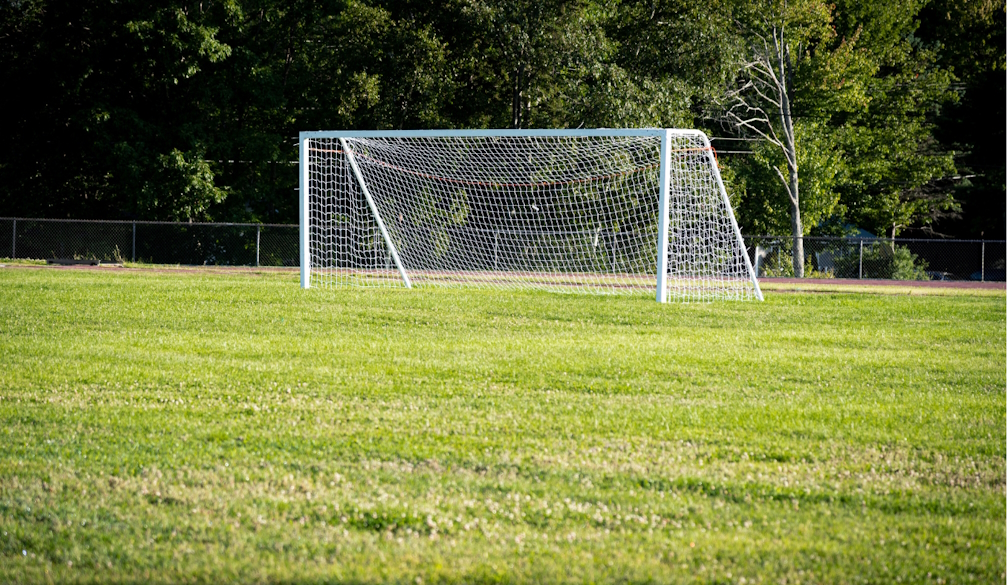School ovals and playgrounds are sitting unused. Why aren’t more open to the community?
- Written by Paul Kidson, Senior Lecturer in Educational Leadership, Australian Catholic University

Schools are full of extremely useful and valuable facilities. These include playing fields, play equipment, sandpits, netball courts, concert halls, libraries and even pools.
But these are often closed to the public and can sit unused for hours, days and weeks, depending on the time of year. For example, in Victoria, about a third of government school grounds[1] are not currently open to the public.
There is growing pressure for this to change, as more people live closer together and community facilities get squeezed.
In an October 2024 report, Infrastructure Victoria recommended[2] the state government open more of its public school grounds after hours, to boost access to local recreation spaces for about half a million people.
Why don’t we do this already? And why don’t we open up private schools as well?
What happens at the moment?
There are already well-established processes to open government schools for public use.
For example, along with opening their grounds for informal use, many Victorian schools hire out school facilities[3]. The emphasis is on educational, sporting or cultural activities for students, young people and the local community – such as a local theatre group putting on a play or an awards night for the local football team.
But as with other public parks and sporting facilities, these need regular maintenance to make sure they are in good working order. Some schools have expressed concerns about damage or antisocial behaviour[4] when grounds are not supervised.
This means funding is required – either directly from schools’ already stretched budgets or via state governments’ already stretched budgets – to expand and maintain the use of public school facilities.
It’s not impossible to do, but governments must provide and allocate funds explicitly for this, rather than ask schools to yet again do more with less.
What about private schools?
Many private schools also already hire out their facilities for a wide range of activities, from weddings, to swimming squads, to accommodation for conferences.
But there is also pressure, particularly in New South Wales[6], for some private schools to open up their facilities and grounds when not in use by the school.
Former NSW state planning minister Rob Stokes is among those calling for private schools[7] to share their spaces with local public students and the community. Stokes has argued[8] because independent schools receive government funds “they’re public spaces”.
But a retrospective change of rules would likely spark opposition from private school parents who have already paid fees to build these facilities. As Independent Schools Australia has noted[9], parent contributions made up 87% of capital infrastructure costs in private schools as of 2022, with state governments only contributing 7%.
Beyond the question of who “owns” these spaces, the questions about maintenance remains. As debates about adequate funding for public schools continue[10], it would be both politically[11] and financially[12] courageous for any government to give independent schools more money.
Joint projects?
At the same time, we still have the underlying issue about a lack of local facilities for students and community members.
One place to start could be future joint projects. For example, a program could provide funding for independent schools to build new facilities on the proviso they are also accessible to the local community[14], perhaps at low or no cost.
This is similar to the Rudd government’s Building the Education Revolution[15], which built and upgraded school facilities.
What about acccidents?
But arguably the largest unanswered question is who is responsible when someone using these facilities is injured.
At the moment, when government and independent schools hire facilities to the public, there are hire agreements. This means those using them need to be adequately insured[16]. Hire fees also help cover maintenance and cleaning costs.
If members of the public are using facilities without such agreements, it raises serious questions about duty of care and responsibility for things which happen on school grounds outside normal hours of operation.
The suggestion to open up more facilities – particularly those in private schools – has an attractive simplicity. But we need more detail and clarity about the legal and financial implications of how it could work.
References
- ^ about a third of government school grounds (www.abc.net.au)
- ^ recommended (www.infrastructurevictoria.com.au)
- ^ hire out school facilities (www2.education.vic.gov.au)
- ^ expressed concerns about damage or antisocial behaviour (assets.infrastructurevictoria.com.au)
- ^ Gillian Vann/ Shutterstock (www.shutterstock.com)
- ^ particularly in New South Wales (www.smh.com.au)
- ^ Rob Stokes is among those calling for private schools (www.abc.net.au)
- ^ has argued (www.smh.com.au)
- ^ has noted (isa.edu.au)
- ^ adequate funding for public schools continue (theconversation.com)
- ^ politically (www.aeufederal.org.au)
- ^ financially (education.nsw.gov.au)
- ^ Tanitost/Shutterstock (www.shutterstock.com)
- ^ also accessible to the local community (www.tandfonline.com)
- ^ Building the Education Revolution (ministers.treasury.gov.au)
- ^ need to be adequately insured (www2.education.vic.gov.au)

















